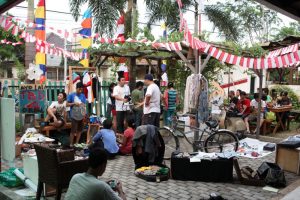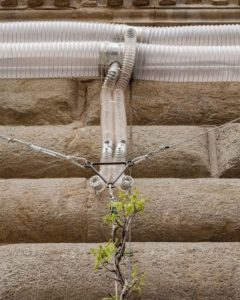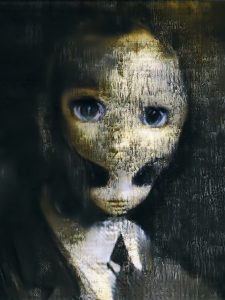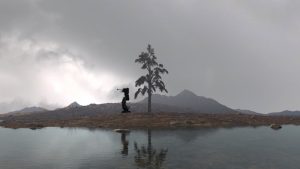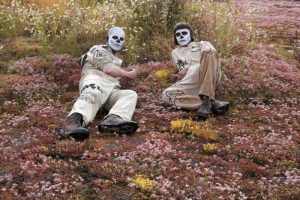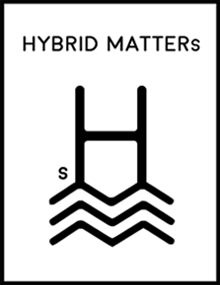 This week, i’m sure, i’ll finish blogging all the notes and photos and ideas i picked up during the HYBRID MATTERs symposium that took place in Helsinki over a month ago.
This week, i’m sure, i’ll finish blogging all the notes and photos and ideas i picked up during the HYBRID MATTERs symposium that took place in Helsinki over a month ago.
HYBRID MATTERs is a Nordic art&science network program that investigates hybrid ecologies, the convergence of our environment with technology and essentially the intentional and unintentional transformation of our planet through human activity. The actors of this hybrid ecology are many. They are genetically engineered plants, cloned trees, animals used as sensors. Or they are robots, software and networks that encroach on the biological and sometimes manage to fuse with it. Some of this hybrid ecology is the direct result of human actions but increasingly, we see signs that biological and technological entities are escaping human control and are transforming the planet.
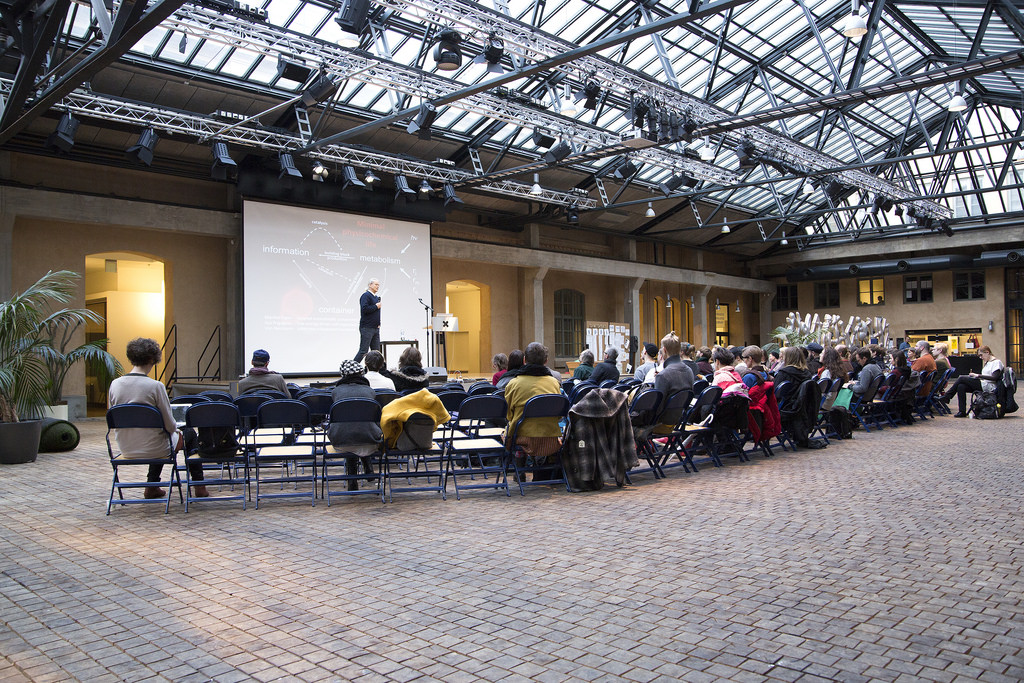
The audience of the HYBRID MATTERs symposium. Photo by Petri Tuohimaa
I already profusely wrote about the HYBRID MATTERs exhibition. Today i’ll get to grips with the symposium. All the talks are online. So instead of summing up what each speaker has said, i’m going to highlight a couple of points they made because i found them worth mentioning, rediscovering or simply because they were new to me (Claude Monet as a painter of the anthropocene!)
Three keynote speakers took the stage on the first days of the symposium:
Steen Rasmussen is Professor at the Center for Fundamental Living Technology (FLinT), University of Southern Denmark. A major part of his academic activities involves researching how to create life from scratch, ‘a bit like an alchemist’. That’s what the first part of his talk was about but my notes will be focusing on the second part of his presentation. The one that exposed the potentially radical consequences that BINC technologies will have on our society. I loved his talk, it was lively, enlightening and there was a very ‘combative’ energy to it.
Jussi Parikka, Professor in technological culture & aesthetics at Winchester School of Art (University of Southampton), was the arty one. His talk explored the geophysics of media technologies, the bits and pieces of our planet that lurk inside our electronic gadgets and the role that art can play in making this situation more visible.
Jennifer Gabrys, a Reader in the Department of Sociology at Goldsmith, looked at how animals are increasingly made into sensor nodes and networks that inform us on environmental conditions.
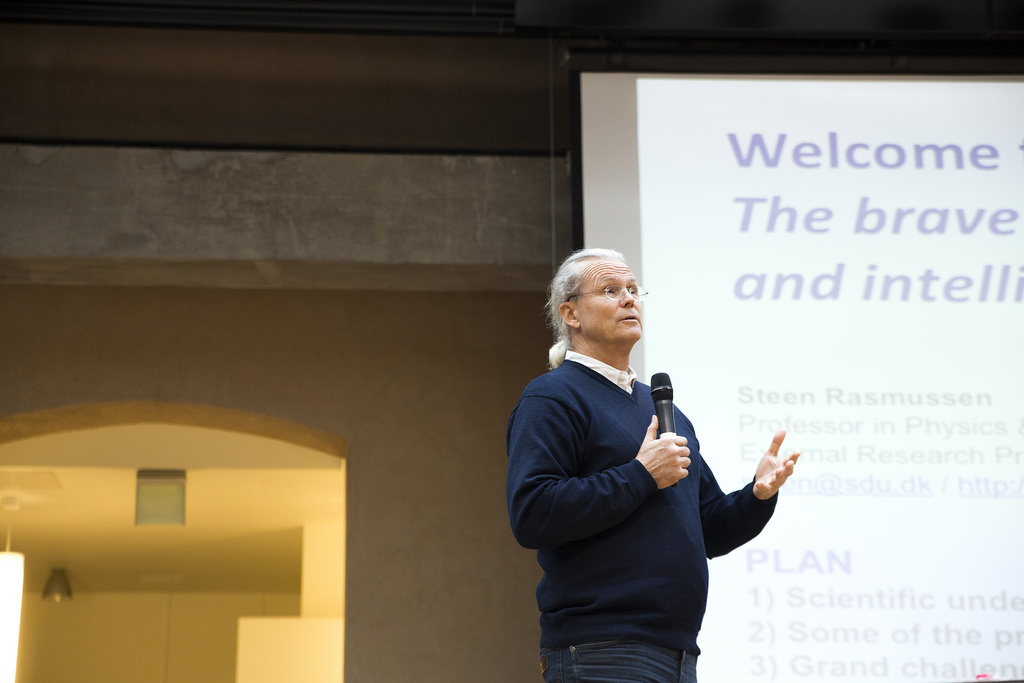
Steen Rasmussen at the HYBRID MATTERs symposium. Photo by Petri Tuohimaa
HYBRID MATTERs 24.11.2016 Keynote Steen Rasmussen
We’re going to kick off with Steen Rasmussen‘s talk Welcome to the BINC-Age: The brave new world of living and intelligent technologies. What did i retain from it?
1. This is not just another industrial revolution
As the BINC technologies (the biotech, infotech, nanotech, and cogitive-sciences) converge, they will change technology and drive society to radically different places.
Rasmussen believes that we can’t predict where the rapid development of artificial intelligence is going to leave workers.
Several studies have concluded that within the next 15 to 20 years about 50% of all known job functions will be taken over by more efficient informational systems. This means that there are big changes coming up and they cannot be compared to the changes that took place with the automation in factories during the Industrial Revolution. At the time, it was clear what was going on, where the jobs were going: the farming hands were going to be employed in the factories. Today, the outlook is not so clear.
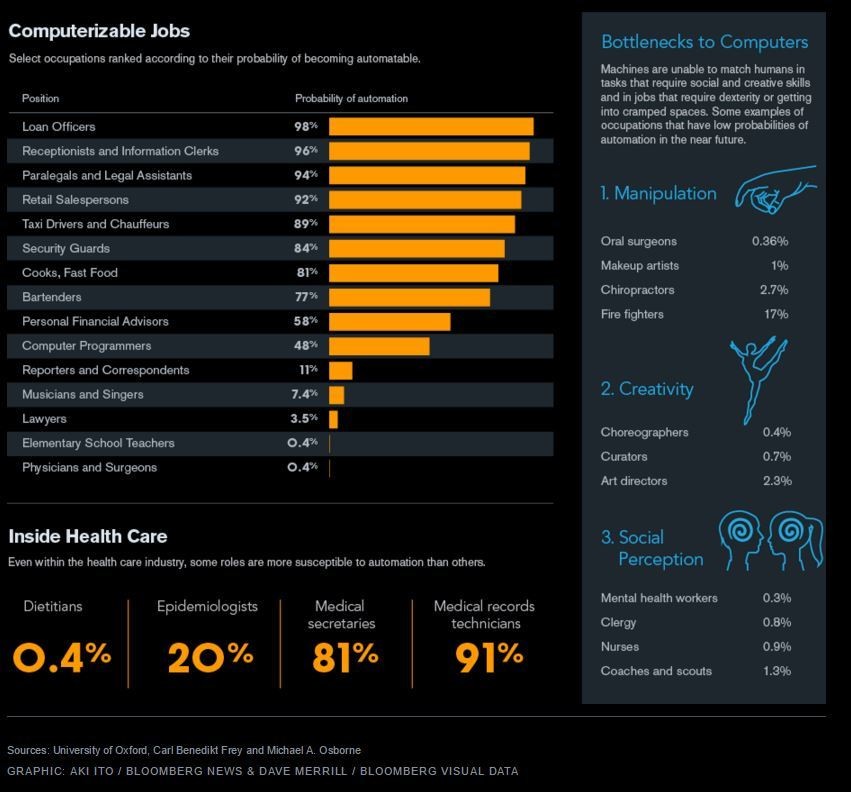
Image found in Stephen Hawking: This will be the impact of automation and AI on jobs
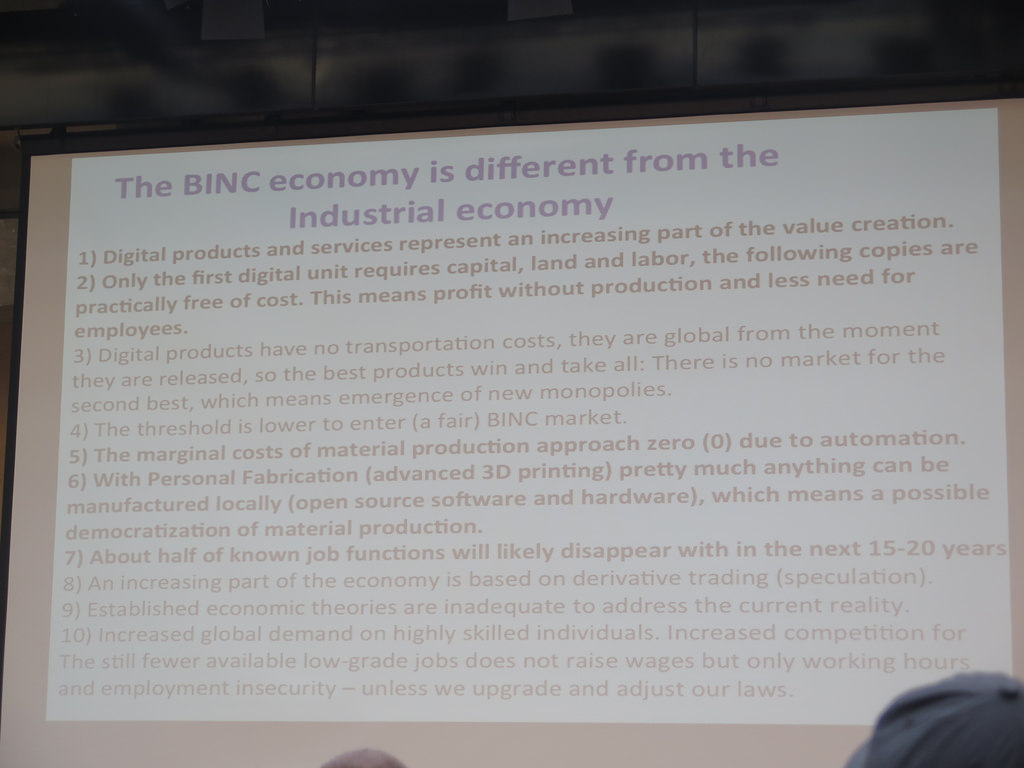
Slide from Steen Rasmussen’s keynote listing the ways in which the BINC economy will be different from the economy of the Industrial Revolution
2. In this new economy, we can make profit without production
A key element of the new economy is that we can make profit without production. This has never happened before.
Compare the sale of these two Swedish companies. Minecraft, which had 40 employees, was sold for 14 billion Swedish crowns and Volvo, with its 23 000 employees, for 7 billion crowns only.
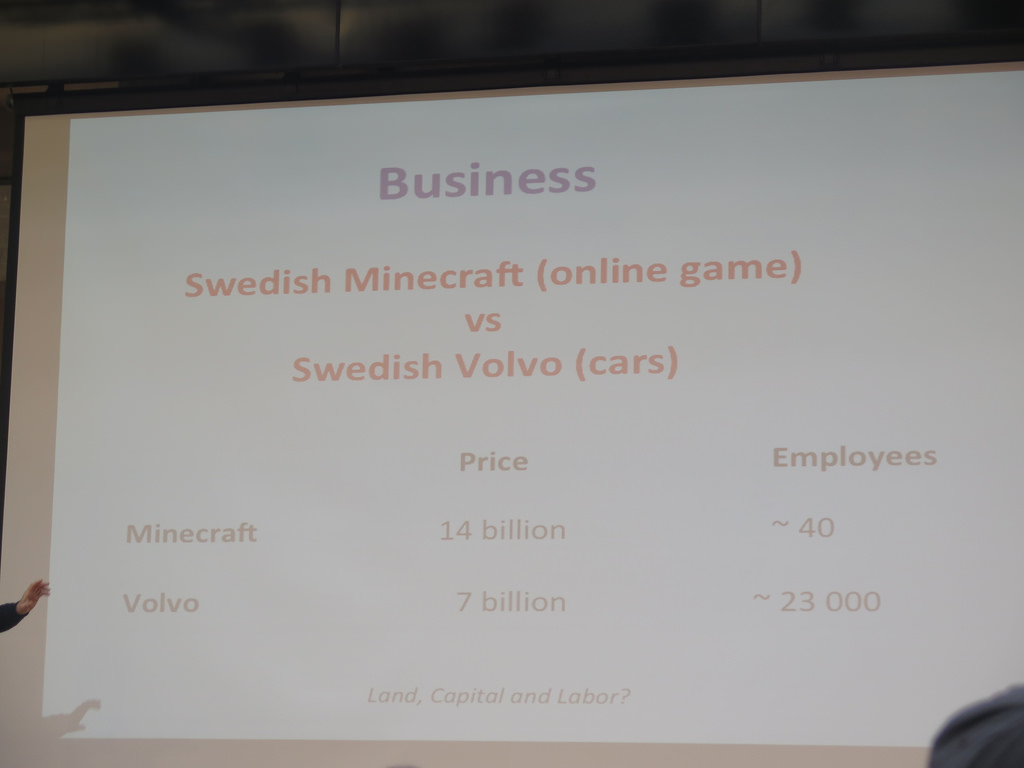
Slide from Steen Rasmussen’s keynote
Today, the leaders of the BINC economy are google, microsoft, amazon, etc. Unlike General Motors, they don’t have million of employees. All the rules we’ve known for so long don’t apply anymore. If we look at history, all the major changes of production, communication and transport were accompanied by important changes in our institution and economical sector. BINC technologies have the potential to do the same to our current post-industrial world.
Rasmussen believes that the BINC transition is more fundamental and that it is akin to the transitions humanity experienced going from hunter gathers to agriculture.
3. It’s more complicated than ‘post-truth’. There are different conceptions about the nature of truth
Rasmussen has tried to engage with institutions such as the EU commission, the German Parliament, the Danish Parliament, etc. He tried to start a discussion with policymakers about how these BINC technologies are about to change the world. He soon realized that the issues related to the impact of BINC are not part of policymakers’s main interests. Why is that?
Part of the explanation might be found in what we call ‘truth.’
Truth cannot be absolute because it is ultimately coloured by your underlying interests. People from the field of humanities will have a deep interest in understanding fellow men. Those from natural and engineering sciences will have a deep interest in controlling nature. Whereas, people with a background in social sciences will have a deep interest in becoming free from oppression.
There is only one scientist among the 179 members of the Danish parliament. Besides, Rasmussen doesn’t know of any engineers or natural scientists holding a lead position in the Danish press. All of them are communicators. This means that these are people who believe that truth is relative. As for the increasingly popular social media, they function like echo channels where crazy ideas and misunderstanding take ground. That’s how we end up with ‘post-truth’ as the word of the year in Oxford Dictionary. According to Rasmussem, politicians’ lies (whether we’re talking Brexit or Trump) wouldn’t be taken so seriously if truth wasn’t seen as relative and if our narratives still made sense.
4. We need to start producing new narratives
His conclusion is that we need to tell stories about ‘the new brave world of BINC.’ Or someone else, with their own idea of ‘truth’, might do it for us. These narratives should explore questions such as:
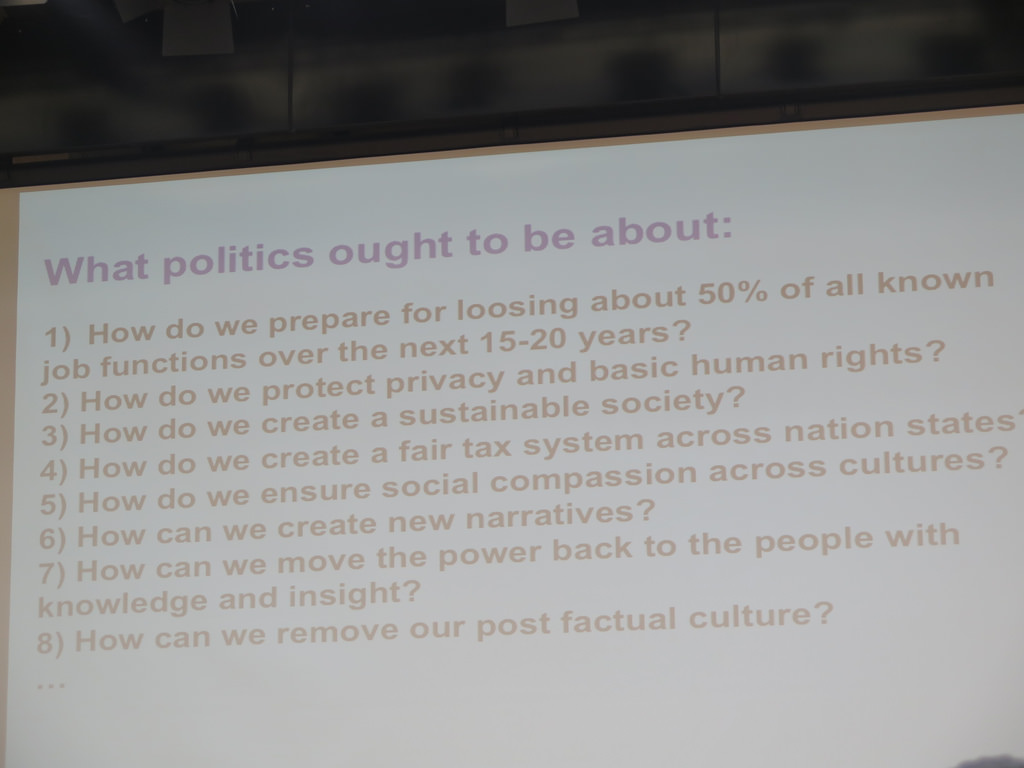
Slide from Steen Rasmussen’s keynote
Jussi Parikka’s talk, For a Damaged Planet: Slow Violence in the Age of Fast Computation explored the geographies of supply chains that make out technological possible (but also highly toxic for the environment and for workers living in far away countries.)
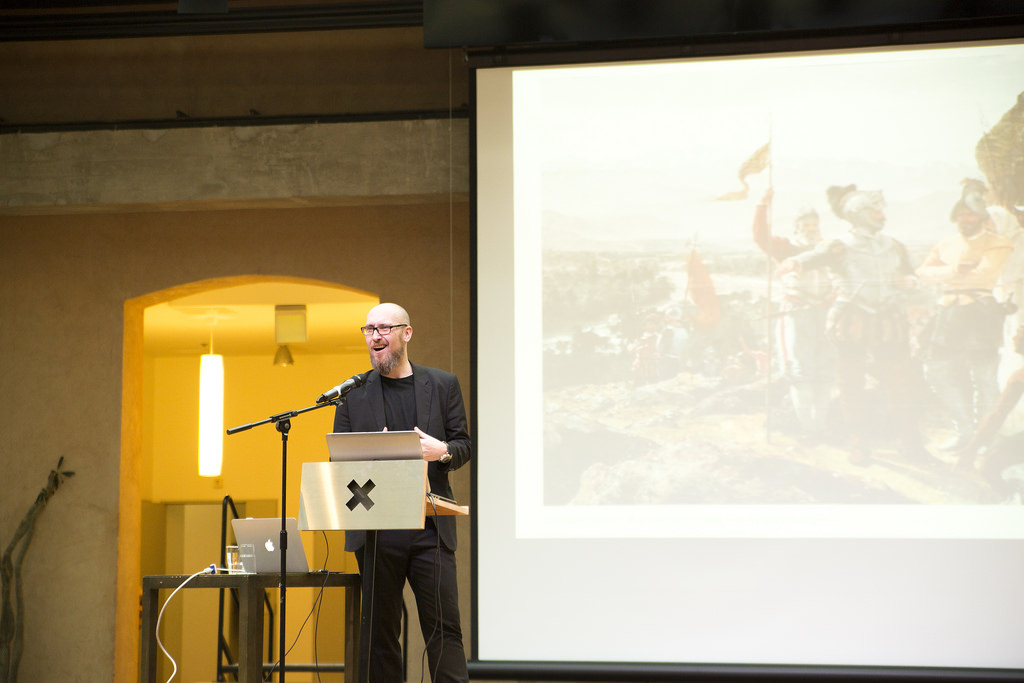
Jussi Parikka at the HYBRID MATTERs symposium. Photo by Petri Tuohimaa
HYBRID MATTERs 24.11.2016 Keynote Jussi Parikka
5. The contemporary is not the present
It is the result of the collaboration of different registers of time. War is a good example. A war cannot be summarized in human casualties, it is an entanglement of social and natural history and parts of it remain around us, as residues of a slow chemical violence that permeate the soil, in the air, long after peace treaties have been signed.
World War I was a mass mobilization of new technologies that came to define the 20th century in so many ways. Wrist watches, for example. Or the technologies of chemical warfare that were deployed so effectively during the war and would later provide the backbone of the pesticide industry. Both are still with us today.
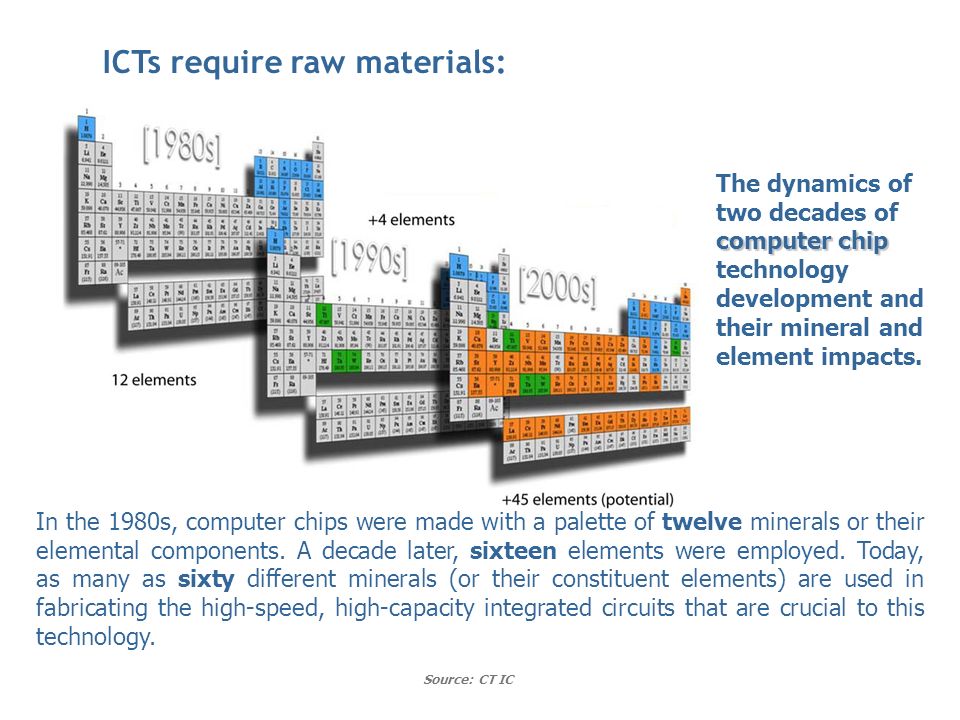
The dynamics of two decades of computer chip technology development and its mineral and element impacts. In the 1980s, computer chips were made with a palette of twelve minerals or their elemental components. A decade later, 16 elements were employed. Today, as many as 60 different minerals (or their constituent elements) may be used in fabricating the high-speed, high-capacity integrated circuits that are crucial to this technology. SOURCE: Intel Corporation
6. We need to start looking at hardware again
We need to be aware of what hardware infrastructure does to our world because it is part and parcel of this slow media violence.
100 years ago we relied on a couple of key materials (wood, iron, copper, etc.) The 20th century saw the arrival of plastics. Meanwhile, a broad variety of minuscule elements that are crucial for our technological society have appeared and they require new minerals. Computer chips, for example, demands dozens of minerals. The extraction, transport, processing and production of these minerals is key to our technological culture. It is also highly damaging for the environment and for the labour conditions of human beings who are invisible to us. We’ve all heard of coltan. The case of earth minerals might be less well-known. They are part of the production of electronic objects and their extraction and processing involve great costs for the environment.
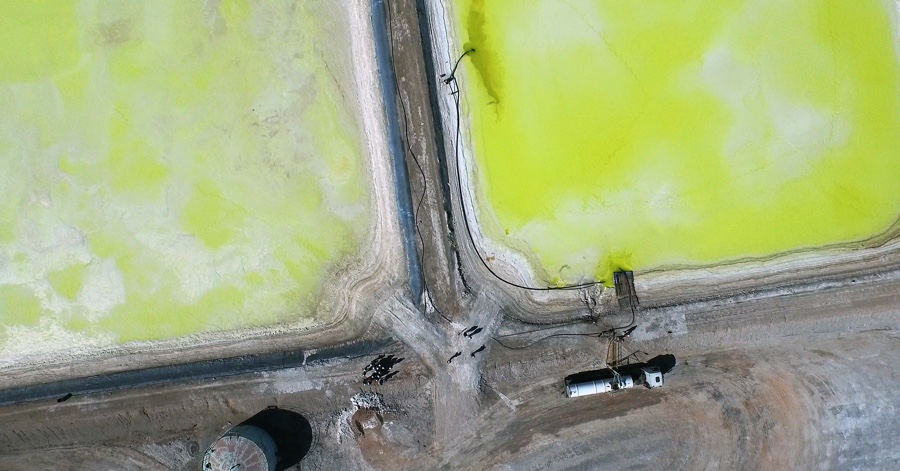
Unknown Fields, Lithium Dreams
A work like Unknown Fields’s Rare Earthenware visualizes this toxic violation of the planet. One of Unknown Fields’s most recent works explores lithium, a metal seen as essential to the development of ‘green technologies’. Its extraction and production, however, come with toxic ecological consequences.
7.The Anthropocene plays a part in our visual culture
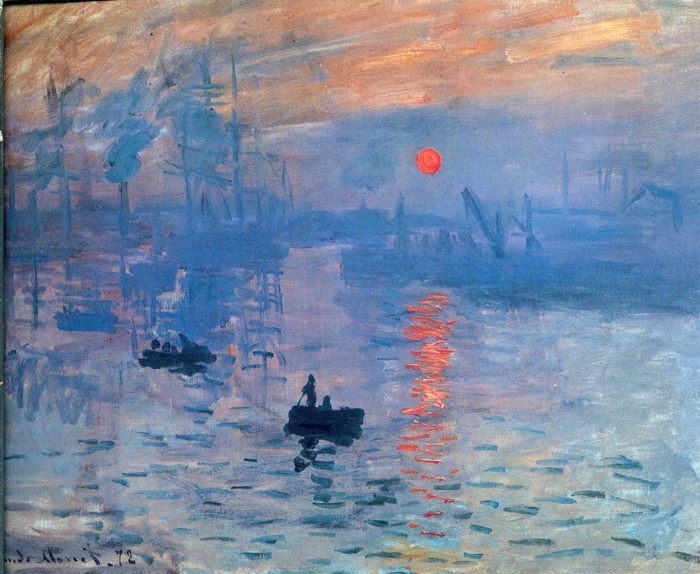
Claude Monet, Impression, Sunrise, 1873
Unknown Fields’ work fulfills very well this role of making the anthropocene more tangible. But we can reinterpret art history under the light of this new era. In his essay, Visualizing the Anthropocene, Nicholas Mirzoeff explores how art can visualize the Anthropocene. Part of his text revisits key works of art history. For example, he invites us to re-interpret Claude Monet’s painting Impression, Sunrise and see the particular light that bathes the scene painted as the result of industrial smog, a registering of the afterglow of the coal-based economy. With this work, Monet is a painter of pollution.
Jennifer Gabrys‘s talk was titled Animals as Sensors. Mobile Organisms and the Problem of Milieus. Its content drew on her book Program Earth. Environmental Sensing Technology and the Making of a Computational Planet which looks at sensor technologies distributed in the environment and how they weave new relationships with the environment and make the Earth programmable.
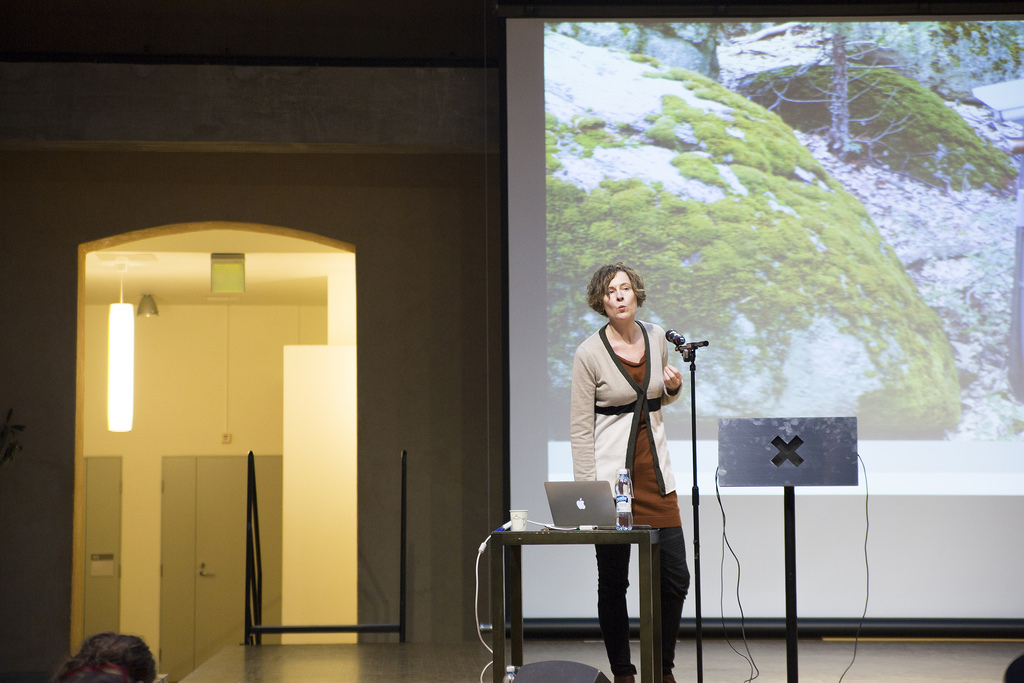
Jennifer Gabrys at the HYBRID MATTERs symposium. Photo by Petri Tuohimaa
HYBRID MATTERs 24.11.2016 Keynote Jennifer Gabrys
Gabry’s talked focused on one particular chapter of the book, the one that explores ‘animal sensing’ and how animals are sensors themselves of large scale phenomena.
8. Sensors distributed in the environment are not just sensing worlds but making worlds
You can sense climate change through the way moss is responding to its environment. Similarly, the tagging of animals informs not only the journeys these animals take during their migrations but also the environment that they inhabit. For example, Southern Ocean seals tagged to capture ocean data are also indicators of longer term shifts in climate. Sensors can pick up any disruption in the behaviour of the animals, in their habitats, in the place where they go to die, etc. This data will then inform policy and management decisions.
9. Citizens can play a part in animal sensing
The Max Planck Institute for Ornithology has released a tracking app that allows you to follow the movements of wild animals all over the world in near-real time. These movements are collected by tiny GPS tags carried by the animals and are stored on a free online infrastructure used by researchers to share, analyze, and archive animal movement data. With this tool for citizen engagement, people are invited to participate in the research projects and upload real-life observations and photos of the tagged animals.
The HYBRID MATTERs symposium was a collaboration between the Bioartsociety and the MA in Ecology and Contemporary Performance, Theatre Academy of the University of the Arts Helsinki.
The event was part of the HYBRID MATTERs Nordic art&science network program which investigates the convergence of our environment with technology and essentially the intentional and unintentional transformation of our planet through human activity. The program took the form of a series of researches, encounters, art commissions, exhibitions and a symposium.
Previously: HYBRID MATTERs exhibition: when biological and technological entities escape our control and transform the planet, Albedo Dreams. Experiments in DIY climate manipulation, HYBRID MATTERs: The urks lurking beneath our feet and The Christmas tree, your typical postnatural organism.
Photo on the homepage from Unknown Fields, Lithium Dreams.

